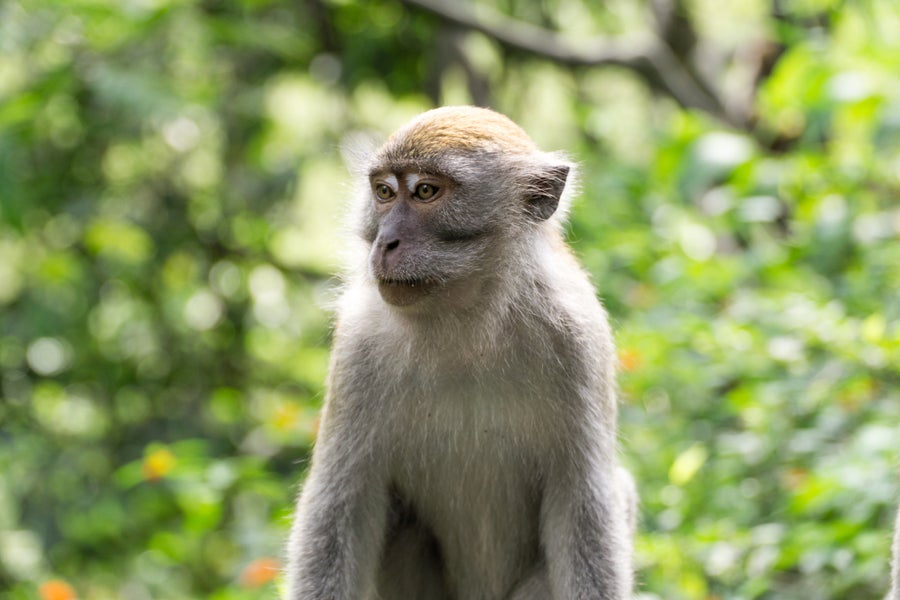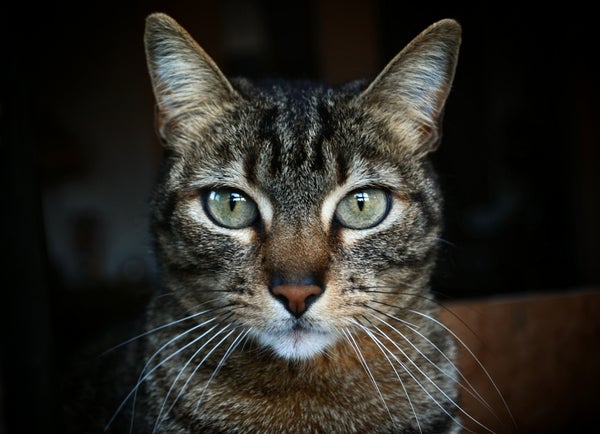Scientists are scrambling to learn how the novel coronavirus, SARS-CoV-2, causes disease, as well as racing to develop treatments and, critically, a vaccine. The work relies heavily on a rarely acknowledged player: research animals. One of the most unusual things about SARS-CoV-2 is the wide range of disease severity it has in humans—from mild or asymptomatic infections to deadly ones. Creating animal models that reflect such clinical diversity will be important, albeit difficult. Creatures ranging from the humble laboratory mouse to hamsters and baboons are in the mix. We do not yet know which animals will prove most useful; different species may be best suited to answering different questions.
Reproducing serious disease is especially tricky, but studies of the coronaviruses that cause severe acute respiratory syndrome (SARS) and Middle East respiratory syndrome (MERS) have laid important groundwork. The go-to medical research animals are mice: they can be quickly bred and cheaply obtained, and researchers already have many tools for working with them. Unfortunately, these rodents—although not immune to infection—do not appear to suffer any ill effects from the new virus. The same was true for SARS, but two strategies proved effective: adapting mice to the virus or adapting the virus to mice.
Engineered Mice
On supporting science journalism
If you're enjoying this article, consider supporting our award-winning journalism by subscribing. By purchasing a subscription you are helping to ensure the future of impactful stories about the discoveries and ideas shaping our world today.
In 2007 microbiologist Stanley Perlman of the University of Iowa and his colleagues genetically engineered mice to produce the human version of the angiotensin-converting enzyme 2 (ACE2) receptor that the original SARS virus used to latch onto cells. The disease was lethal to these “hACE2” mice. SARS-CoV-2 uses the same receptor, so hACE2 mice should likewise be vulnerable to the new virus, Perlman says. He has sent frozen mouse sperm samples to the Jackson Laboratory, which is breeding the animals and gearing up to distribute them to other labs around the world. “We should have enough for the scientific community to conduct its experiments by mid-June,” says neuroscientist Cat Lutz, who directs the Jackson Laboratory’s mouse repository—one of the largest in the U.S.
Virologist Kanta Subbarao, then at the National Institute of Allergy and Infectious Diseases, and her colleagues took another route: they created a strain of the SARS virus that was lethal to ordinary mice. The researchers employed a technique called serial passage, which involves extracting virus from the lungs of an infected mouse, using it to inoculate another one and then repeating the process in additional mice. After 15 cycles, they created a SARS strain that was 100 percent lethal to mice. Studying the genetic mutations involved also enabled them to learn something about how the virus caused disease. Although hACE2 mice are very likely to be susceptible to the new coronavirus, they may exhibit much milder disease than they did with SARS. “The expectation is that SARS-CoV-2 will have to be adapted by [serial] passage in hACE2 mice,” says Subbarao, now at the Peter Doherty Institute for Infection and Immunity in Australia. Researchers also have more prosaic tools at their disposal. “We can possibly manipulate [the viral] dose and route of administration to get a range of severity,” Lutz says.
Perlman has not waited around to see how his hACE2 mouse strain responds to SARS-CoV-2. He used an unrelated virus as a “vector” to carry the human ACE2 gene into adult mouse cells, rendering them temporarily susceptible to the new coronavirus—an approach he pioneered while studying MERS. This method is faster than those that involve altering sperm or egg cells. The technique is useful for testing therapeutics given around the time an animal is infected. But it is not good for “pathogenesis” studies that attempt to help scientists understand how a virus enters cells and replicates or which cells that virus attacks. Perlman is also using gene editing to alter the mouse ACE2 receptor so SARS-CoV-2 can recognize it. Others are editing the virus’s genome to allow it to attach to the mouse receptor. “They may well be able to use any mouse strain” to study COVID-19, Perlman says. “That would be a huge step forward.”
Hamsters, Ferrets and Cats
Researchers are also looking beyond mice. Subbarao and her colleagues found hamsters were useful for studying SARS, so some researchers are using them again for COVID-19. A team at the University of Hong Kong showed that SARS-CoV-2 replicates in hamsters, producing some of the lung damage seen in humans. None of the animals died, but there were signs of illness, including weight loss. The hamsters produced antibodies. And blood serum from recovered animals that was given to others prior to infection lowered viral levels but did not significantly reduce the lung pathology.
Scientists often study respiratory diseases in ferrets, because their lung physiology is similar to that of humans. A team in South Korea found that ferrets infected with SARS-CoV-2 had an elevated temperature and mild lung disease. A paper published days later, however, showed that the virus replicated efficiently only in ferrets’ upper respiratory tract rather than their lower one, which is not reflective of severe disease in humans. That study also found the virus was transmitted between cats in adjacent cages—suggesting transmission by respiratory droplets. So cats may be useful for examining how the virus spreads. Some animals are more difficult to work with than others, though. “A lot of the tools for studying the immune system that we have in mice aren’t nearly as well developed for ferrets or hamsters,” says pathologist David O’Connor of the University of Wisconsin–Madison, who is studying nonhuman primates as part of a large collaboration of researchers using various methods and putting all their data in an online portal called CoVen. “There’s even less research on cats, so there are even fewer tools.” Some animals are also more difficult to obtain or take care of or are costlier, but researchers need more information before ruling any species out. “In an emergency like this, where we don’t have the luxury of time, we have to let the biology guide us,” O’Connor says. “It may turn out these less conventional models are the best approach, in which case we’re going to have to develop the expertise to study them.”
Monkeys
Nonhuman primates are “the gold standard when it comes to testing vaccines and therapeutics,” says virologist Barry Rockx of Erasmus University Medical Center in the Netherlands. A preprint paper by virologist Chuan Qin of the Chinese Academy of Medical Sciences and Peking Union Medical College and her colleagues, posted online in March, found that the virus replicated in the noses, lungs and guts of rhesus macaques. The animals also lost weight and showed signs of pneumonia. The study grabbed attention because the researchers showed that recovered monkeys could not be reinfected. “That provided good news: that protective immune responses can be elicited by natural infection,” O’Connor says, “though the durability still needs to be figured out.” A U.S. team has also demonstrated in a preprint study that infected rhesus macaques given the antiviral remdesivir (which was recently approved for emergency use in treating COVID-19 patients) had milder symptoms and lung pathology.

Cynomolgus (crab-eating) macaques are also being studied as a possible model of COVID-19. Credit: Hendra Su Getty Images
One of the main factors influencing COVID-19 severity in humans is how old an individual is, so some researchers are studying animals at a range of ages. Rockx led a recent study using both young and old cynomolgus macaques—none of which displayed overt symptoms. “There are no clinical signs, but you do see lesions in the lung,” he says. This animal model could be useful for testing whether drugs reduce the transmission of disease or have adverse effects, Rockx adds. He and his colleagues detected more virus lingering longer in older monkeys, but those animals’ disease was not more severe. Meanwhile researchers at Texas Biomedical Research Institute (Texas Biomed) are studying rhesus macaques, baboons and marmosets simultaneously. “We’re comparing multiple nonhuman primate species, to see if we can recapitulate the [range of disease] observed in humans,” says Deepak Kaushal, director of Texas Biomed’s Southwest National Primate Research Center. His team is also not seeing significant differences in severity with age.
Recall, though, that only a small fraction of people with COVID-19 become critically ill. And these studies used relatively small numbers of monkeys. These caveats illustrate a drawback of nonhuman primates: because of ethical and practical concerns, it is not possible to study large enough numbers of them to reveal all facets of the disease—or even to calculate meaningful statistics. But doing so is not the primary goal. O’Connor’s studies involve injecting virus deep inside the lungs of cynomolgus macaques to elicit measurable disease. “We have lung disease that’s quantifiable, which means we can measure a reduction in that as a readout for medical countermeasures,” he says. The issue of severe disease becomes “academic,” he adds, “because if you can’t get the same readout consistently, you don’t have a good system for testing vaccines and drugs.” Nonhuman primates are subject to the highest ethical bar for research, however, so they are used sparingly.
The End Goal
A crucial advantage of animal studies is control. “With humans, you don't know when they get infected, what exactly happens,” Perlman says. “You can understand disease much better in an experimentally infected animal, because you can manipulate parameters,” such as exposure route, dose and time of infection. The same principle applies to generating efficacy and safety data. “You’ll never have that sort of control in a clinical trial,” O’Connor says. “That’s where animal models are essential.”
Existing vaccine strategies—partly based on those developed for SARS—have led to some candidates for a COVID-19 vaccine skipping the animal testing phase. “It's challenging in the COVID-19 era, because people don’t want to wait,” Perlman says. “For drugs, it's not a good idea to skip the animal steps. But for vaccines, they’re really being skipped or minimized.” The urgent need, the lack of well-established animal models and previous experience with some vaccine platforms have all sped up the time line. The fact that vaccine strategies have been tested in humans, even if for different pathogens, provides some reassurance about safety, but there is also a specter raised by previous animal studies: vaccines can sometimes enhance disease, including via a phenomenon known as antibody-dependent enhancement. If that problem were to occur with a COVID-19 vaccine, “you would want to know that,” says Larry Schlesinger, president of Texas Biomed. Scientists also need to understand immune responses. Recent data from China suggests not everyone infected with the virus generates enough protective, or “neutralizing,” antibodies to become immune. AndSARS-CoV-2 has not been around long enough for us to know how long people who may be protected remain so. “This has important implications for what a vaccine would look like,” O’Connor says.
Just last week in Science, Qin and her colleagues published results from a study of an inactivated SARS-CoV-2 virus vaccine candidate that produces neutralizing antibodies that bind to the virus’s “spike” protein, which allows it to enter cells. The researchers showed that the vaccine, called PiCoVacc, generated immune responses that protected against several strains of the virus in mice, rats and rhesus macaques. Reassuringly, they saw no signs of antibody-dependent enhancement. And human trials are expected to begin later this year. If none of these initial attempts are successful, however, basic research may become critical. Better understanding may be required to pursue more sophisticated strategies. And to understand a virus, researchers need to study it in living organisms. “Everyone hopes the generic approaches we’re already testing are going to be spectacularly successful,” O’Connor says. Developing a vaccine “might be straightforward, but we have to prepare people for the possibility it might not be.”
Read more about the coronavirus outbreak from Scientific American here. And read coverage from our international network of magazines here.
